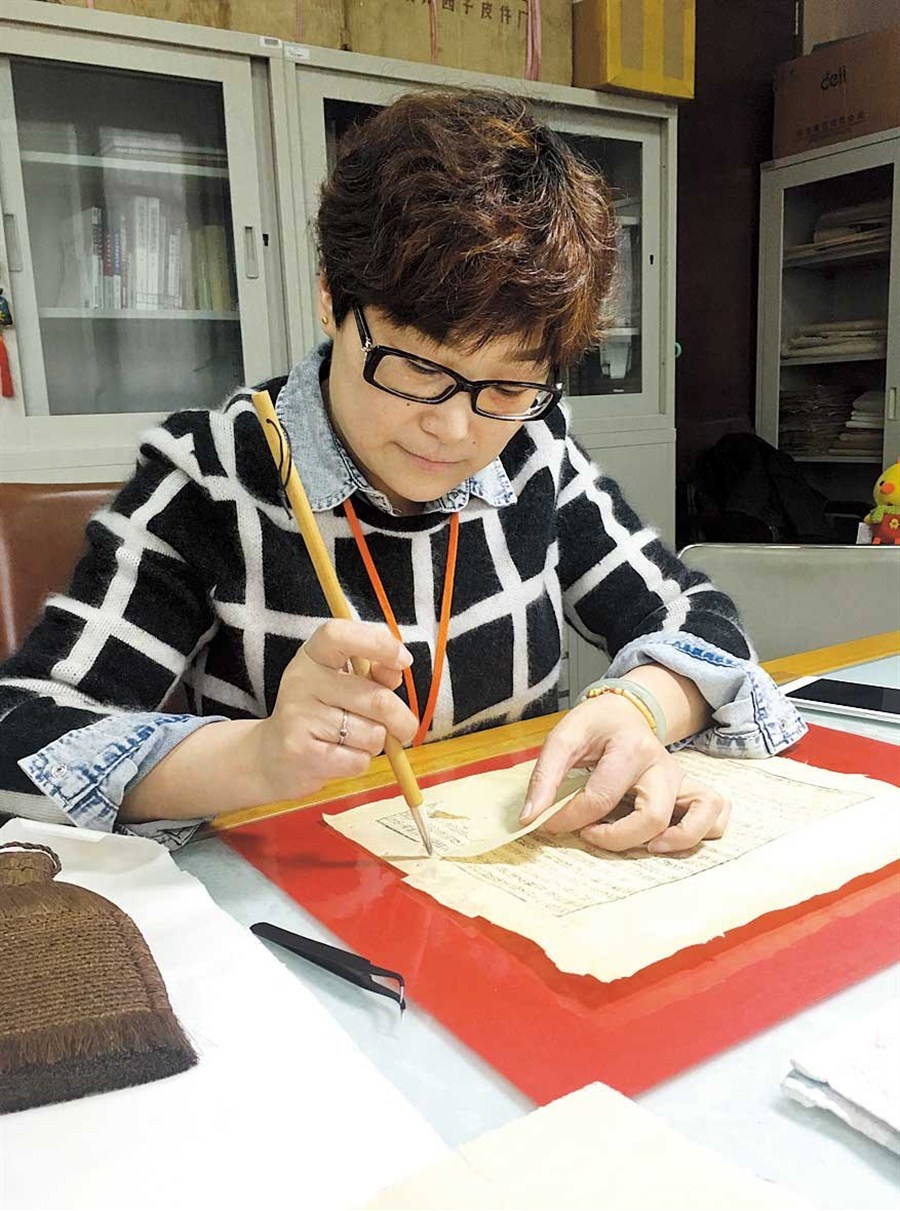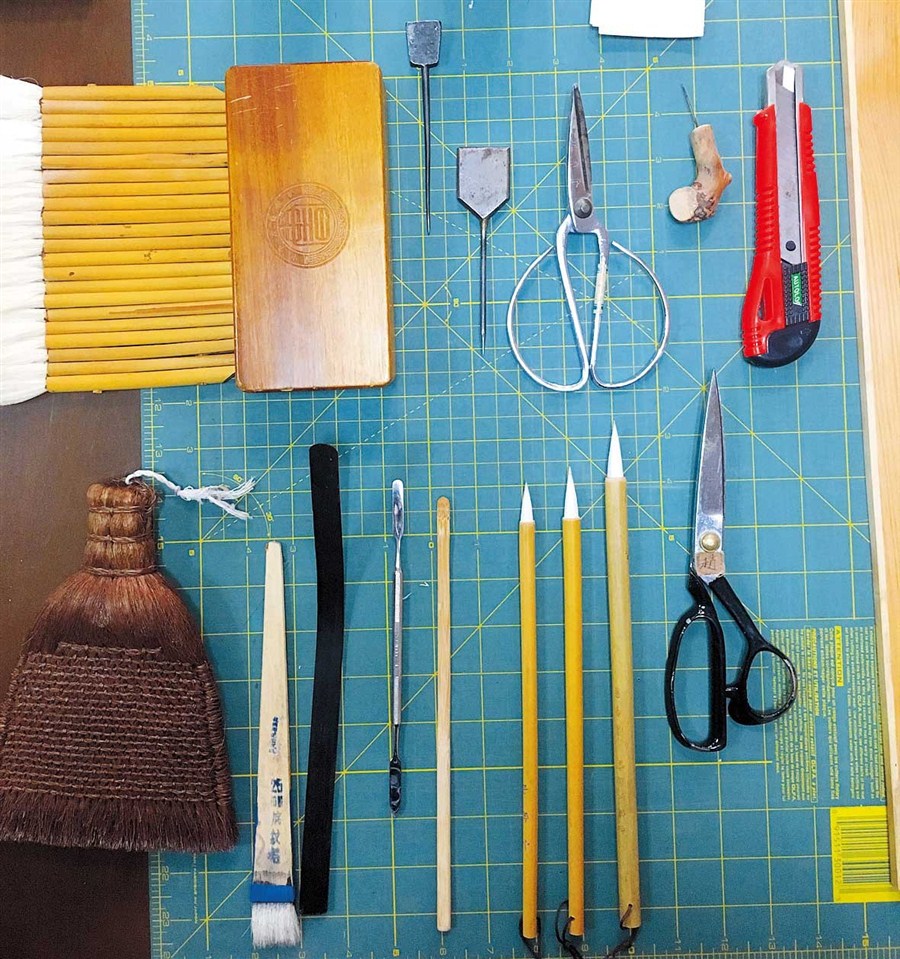ZHAO Ling had never imagined she would attract more than 100,000 viewers on her live stream platform on March 3. During the online broadcast, the 48-year-old book-repair master showed off her studio and the repairing process to the public and brought Hangzhou Library to the spotlight.

Zhao Lin, along with her two apprentices, has carefully restored more than 2,000 books till date.

Tools used to restore ancient books
Zhao has been dealing with ancient books since she joined the library in 1990. She, along with her two apprentices, has carefully restored more than 2,000 books till date.
“Our library has more than 40,000 ancient books, but half of them need mending due to multifarious reasons. Among them, 36 have been listed as national protected ancient books,” said Zhao.
Most of the collections are stitched-bound editions, in which single-printed folio pages were pasted together and folded in a stack, creating a book in which pairs of printed pages alternated with blank ones.
Zhao had to cut the threads and disassemble them before fixing it.
“It takes more than a month to repair a badly damaged book. In order to preserve them longer, we only use natural materials to fix,” said Zhao.
Natural materials include hand-made glue and quality rice paper. Modern glue contains acid element that can harm books in the long term. In order to ensure there is no damage, Zhao cooks starch to make the natural glue.
As for rice paper, the library transports them from workshops in Zhejiang, Anhui and Fujian provinces. All the papers are made by hand.
“Ancient books from Yuan (1271-1368), Ming (1368-1644) and Qing (1644-1911) dynasties can be preserved for centuries, though some of them have been eaten by moths,” said Zhao. “The books made in the Republic of China period (1912-1949) are more fragile, because the rice paper then was made by machines that used chemical materials.”
Rice paper from different eras has different textures. Some were made from bamboo and some were made from cotton. Zhao can make out the difference simply by touching them.
“It is better to fix the book with the same kind of rice paper. However, sometimes I still need to send samples to the labs to find out the real type,” Zhao said.
Zhao glues a piece of rice paper on a tiny hole in a book. The fixed hole gets wet during the restoration process that adds wrinkles after they are dried. Therefore, Zhao sprays water on the paper and then presses it with a heavy plank until it gets dried.
Some of the moth-eaten books are dotted with the worm’s eggs, so she gets rid of them first and then starts fixing the books.
For badly damaged books, Zhao has to assemble the pieces and then glue them to a piece of rice paper with a horsehair brush. Some pages are so badly destroyed that even characters have disappeared.
“When repairing books, book fixers must follow a few principles. Not changing the original appearance should be the priority,” said Zhao. “After mending, do not try to make up for the lost characters.”
Some of the damaged books are so precious that repairing them first needs approval of the national ancient book protection departments. At the Hangzhou Library, only Zhao and the curator have the keys to the section that preserves these ancient books.
The purpose of mending books is to protect local historic documents. Some of the books might be the only editions in the world, making it an immensely valuable property. Zhao rebinds the books according to its original bookbinding method, and then the library sends them to publishers.
“The original editions are not available for readers. But when they are published again, every one can get them,” said Zhao.
In 1990, the central government launched a project to protect the ancient books and hosted two training classes in Beijing and Shanghai. The then 21-year-old Zhao was sent to Shanghai to learn the skills.
At that time, only few vocational colleges taught how to fix books. But today, many universities are offering it as major and postgraduate courses.
Recently, a documentary “Masters in Forbidden City” about antique repairers caught the attention of the public, and generated huge interest in repair work.
“ After seeing so many people’s enthusiasm toward my job, I feel reassured,” said Zhao. “Netizens even asked how they could become an apprentice. Actually, I don’t have specific requirements, but patience is paramount.”
From Shanghai Dalily
Link